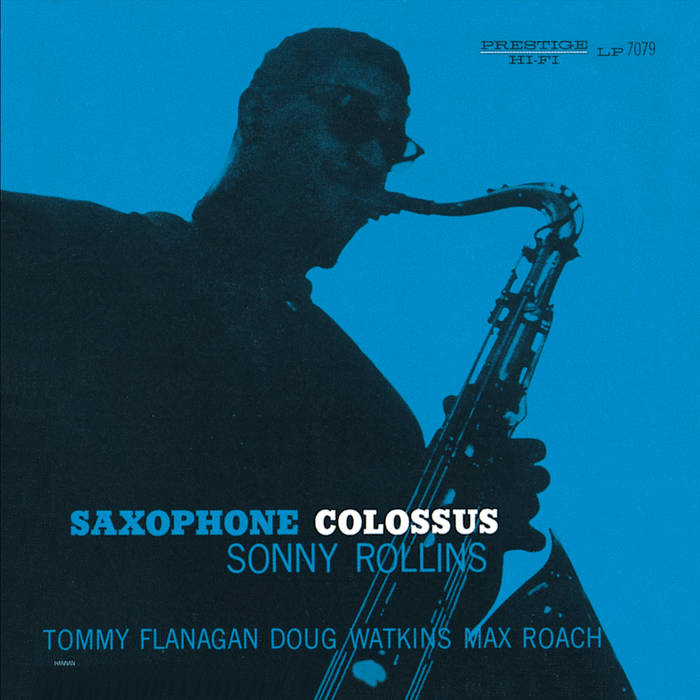Top 4 Sonny Rollins Albums
Sonny Rollins, a legendary tenor saxophonist, has left an indelible mark on the world of jazz. His innovative approach, distinctive sound, and unparalleled improvisational skills have made him a towering figure in the history of the genre. In this exploration, we delve into four of Rollins's most iconic albums, each showcasing a different facet of his musical genius.

Top 4 Sonny Rollins Albums
- Saxophone Colossus

Saxophone Colossus, recorded on June 22, 1956, stands as a pinnacle in Sonny Rollins's illustrious career. Featuring Tommy Flanagan on piano, Doug Watkins on bass, and Max Roach on drums, the quartet delivered a groundbreaking performance that solidified Rollins's reputation as a jazz giant.
The album's standout track, "St. Thomas," a calypso-inspired piece, has become a jazz standard and a testament to Rollins's ability to infuse diverse influences into his music. "Blue 7," an eleven-minute blues masterpiece, showcases Rollins's thematic improvisation, earning critical acclaim. Saxophone Colossus's legacy is further affirmed by its selection for preservation in the National Recording Registry by the Library of Congress.
If you are interested in learning music check out our Music Lessons in Denton.
- A Night at the Village Vanguard

Recorded at the Village Vanguard in New York City on November 3, 1957, A Night at the Village Vanguard captures the magic of Sonny Rollins in a live setting. Playing three sets with different rhythm sections, Rollins displayed his versatility and improvisational prowess.
The album features classics like "Old Devil Moon" and "Sonnymoon for Two," with two different rhythm sections providing contrasting textures. Rudy Van Gelder's recording expertise immortalized Rollins's dynamic performances, making this live recording a cornerstone in his discography. A Night at the Village Vanguard stands as a testament to Rollins's ability to captivate audiences with his unparalleled live energy.
- Tenor Madness
Released in October 1956, Tenor Madness is a historic album, featuring the only known recording of Sonny Rollins and John Coltrane playing together. Recruiting members of Miles Davis's "First Great Quintet," including Red Garland on piano, Paul Chambers on bass, and Philly Joe Jones on drums, Rollins crafted a masterpiece.
The title track, a 12-minute showcase of Rollins and Coltrane's tenor saxophone prowess, is a highlight of the album. The historical significance of this collaboration adds an extra layer of excitement to an already stellar recording. Tenor Madness stands as a testament to Rollins's ability to push the boundaries of jazz and collaborate with fellow titans.
- Way Out West

In 1957, Sonny Rollins ventured into uncharted territory with Way Out West, an album that defied convention. Recorded with bassist Ray Brown and drummer Shelly Manne, this trio format showcased Rollins's innovation through a technique called "strolling."
The album's title track, "Way Out West," is a prime example of Rollins's ability to captivate listeners with minimal accompaniment. Dressed in a Stetson hat and holster for the cover photo, Rollins's playful spirit shines through, emphasizing his journey to the West. Way Out West stands as a testament to Rollins's ability to push boundaries and experiment with unconventional formats.
Sonny Rollins, born on September 7, 1930, is a towering figure in the world of jazz—a maverick whose tenor saxophone has echoed through the corridors of musical history. His career spans over seven decades, during which he has continuously pushed the boundaries of the genre, leaving an indelible mark on the landscape of jazz.
Rollins's musical journey began in Harlem, where he grew up surrounded by the vibrant jazz scene of the 1940s. His early exposure to the likes of Charlie Parker and Lester Young ignited a passion for the saxophone. By the age of 16, Rollins was already making waves in the jazz community, catching the attention of legendary figures like Miles Davis and Thelonious Monk.
One of Rollins's defining characteristics is his relentless pursuit of innovation. He consistently sought new ways to express himself through his instrument, exploring diverse influences ranging from Caribbean rhythms to classical motifs. This willingness to experiment is evident in his groundbreaking recordings, where he fearlessly embraced unconventional techniques and structures.
An essential chapter in Rollins's career unfolded during his time with the Miles Davis Quintet in the 1950s. His contributions to iconic albums like "Milestones" and "Bags' Groove" showcased his ability to navigate complex harmonic landscapes while infusing a distinct energy into the music. However, it was as a bandleader that Rollins truly shone, steering his own ensembles through uncharted territories.
One hallmark of Rollins's playing is his powerful, robust sound—a sonic signature that distinguishes him from his contemporaries. His mastery of dynamics, coupled with a deep, resonant tone, allows him to command attention and convey a wide range of emotions. Whether exploring the upper registers with blistering runs or delving into the sultry depths of ballads, Rollins's saxophone becomes a vessel for his musical storytelling.
The saxophonist's penchant for extended improvisations and thematic development sets him apart as a true virtuoso. Tracks like "St. Thomas" from "Saxophone Colossus" or the title cut from "Tenor Madness" showcase his ability to construct compelling narratives within the framework of jazz standards. His solos are not just technical displays but intricate conversations, where each note contributes to a larger, coherent dialogue.
Rollins's commitment to live performance further cements his status as a jazz luminary. His famous "sabbaticals" from recording studios, during which he would dedicate himself to honing his craft through relentless touring, exemplify his dedication to the essence of jazz—improvisation in a live setting. This emphasis on spontaneity and interaction with the audience has made his concerts legendary, drawing fans into the immersive experience of witnessing a jazz colossus at work.
As a composer, Rollins's contributions extend beyond his role as a performer. His original compositions, such as "Oleo" and "Airegin," have become jazz standards, enriching the genre's repertoire and inspiring generations of musicians. His ability to blend complex harmonies with memorable melodies demonstrates a profound understanding of the jazz tradition while simultaneously propelling it forward.
In the 21st century, Sonny Rollins remains an influential figure and a living legend. His impact on jazz is immeasurable, and his fearless exploration of the art form continues to inspire both seasoned musicians and aspiring artists. Sonny Rollins, the maverick of jazz, stands as a testament to the boundless creativity and enduring spirit of this truly American musical genre.
If you like this check out our article: Top 5 Wayne Shorter Albums
